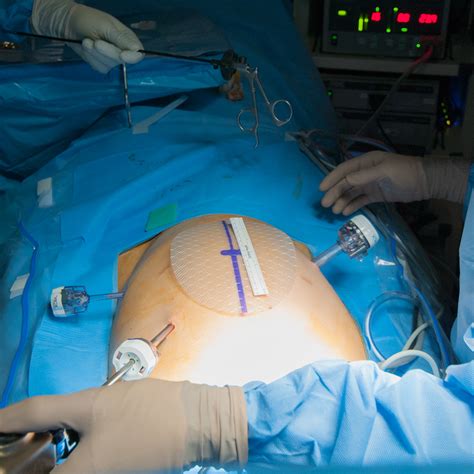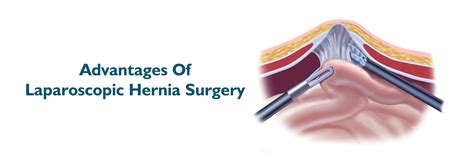Intro
Learn about Surgical Hernia Repair Operation, a minimally invasive procedure using laparoscopic or open surgery techniques to treat hernias, relieving symptoms and preventing complications with expert surgeons.
The topic of surgical hernia repair operations is of great importance, as hernias are a common health issue affecting millions of people worldwide. Hernias occur when an organ or tissue protrudes through a weakened area in the muscle or connective tissue that normally holds it in place. This can cause discomfort, pain, and potentially lead to serious complications if left untreated. In many cases, surgical intervention is necessary to repair the hernia and alleviate symptoms. Understanding the different types of hernias, the benefits and risks of surgical repair, and the various surgical techniques available is essential for individuals considering this treatment option.
Hernias can occur in various parts of the body, including the inguinal canal, umbilicus, hiatus, and abdominal wall. The most common types of hernias are inguinal hernias, which occur in the groin area, and umbilical hernias, which occur near the belly button. Hiatal hernias, on the other hand, occur in the upper stomach and can cause symptoms such as heartburn and difficulty swallowing. Regardless of the type, hernias can significantly impact an individual's quality of life, making it essential to seek medical attention if symptoms persist.
The decision to undergo surgical hernia repair is often made after consulting with a healthcare professional and discussing the potential benefits and risks of the procedure. Surgical repair is typically recommended for hernias that are causing significant symptoms, are large in size, or have become incarcerated or strangulated. An incarcerated hernia occurs when the hernia becomes trapped and cannot be pushed back into the abdomen, while a strangulated hernia is a life-threatening condition where the blood supply to the hernia is cut off. In these cases, prompt surgical intervention is necessary to prevent serious complications.
Types of Surgical Hernia Repair

There are several types of surgical hernia repair operations, including open repair, laparoscopic repair, and robotic-assisted repair. Open repair involves making a single incision in the affected area to access the hernia, while laparoscopic repair involves making several small incisions and using a laparoscope to visualize the hernia. Robotic-assisted repair, on the other hand, uses a robotic system to assist the surgeon during the procedure. Each type of repair has its own advantages and disadvantages, and the choice of procedure depends on the individual's specific condition and the surgeon's expertise.
Open Hernia Repair
Open hernia repair is a traditional surgical technique that involves making a single incision in the affected area to access the hernia. This type of repair is often used for larger hernias or for individuals who are not good candidates for laparoscopic or robotic-assisted repair. The advantages of open repair include a shorter operating time and less risk of complications, such as bleeding or infection. However, open repair can result in a longer recovery time and more post-operative pain.Laparoscopic Hernia Repair

Laparoscopic hernia repair is a minimally invasive surgical technique that involves making several small incisions and using a laparoscope to visualize the hernia. This type of repair is often used for smaller hernias or for individuals who are looking for a faster recovery time. The advantages of laparoscopic repair include less post-operative pain, a shorter recovery time, and smaller incisions. However, laparoscopic repair can be more technically challenging and may require specialized training and equipment.
Robotic-Assisted Hernia Repair
Robotic-assisted hernia repair is a newer surgical technique that uses a robotic system to assist the surgeon during the procedure. This type of repair is often used for complex hernias or for individuals who require a high level of precision and dexterity. The advantages of robotic-assisted repair include improved visualization, increased precision, and reduced risk of complications. However, robotic-assisted repair can be more expensive and may require specialized training and equipment.Benefits of Surgical Hernia Repair

The benefits of surgical hernia repair are numerous and can significantly improve an individual's quality of life. Some of the benefits include:
- Relief from symptoms such as pain, discomfort, and difficulty swallowing
- Reduced risk of complications, such as incarceration or strangulation
- Improved mobility and ability to perform daily activities
- Reduced risk of recurrence
- Improved overall health and well-being
Risks and Complications
While surgical hernia repair is generally a safe and effective procedure, there are potential risks and complications that can occur. Some of the risks and complications include: * Bleeding or hemorrhage * Infection * Adverse reactions to anesthesia * Damage to surrounding tissues or organs * Recurrence of the hernia * Chronic pain or discomfortPreparation and Recovery

Preparation and recovery are crucial aspects of surgical hernia repair. Before the procedure, individuals should:
- Stop taking certain medications, such as blood thinners or aspirin
- Avoid eating or drinking for a certain period
- Prepare for anesthesia and potential complications
- Arrange for someone to drive them home and provide care after the procedure
After the procedure, individuals can expect:
- Pain or discomfort, which can be managed with medication
- Swelling or bruising, which can be managed with ice or compression
- Fatigue or weakness, which can be managed with rest and relaxation
- Follow-up appointments with the surgeon to monitor progress and remove sutures or staples
Post-Operative Care
Post-operative care is essential to ensure a smooth and successful recovery. Individuals should: * Follow the surgeon's instructions for wound care and dressing changes * Take medication as directed to manage pain and prevent infection * Avoid heavy lifting, bending, or strenuous activities for a certain period * Attend follow-up appointments with the surgeon to monitor progress and address any concernsConclusion and Next Steps

In conclusion, surgical hernia repair is a safe and effective procedure that can significantly improve an individual's quality of life. By understanding the different types of hernias, the benefits and risks of surgical repair, and the various surgical techniques available, individuals can make informed decisions about their treatment options. It is essential to consult with a healthcare professional to discuss the best course of treatment and to address any concerns or questions.
We invite you to share your thoughts and experiences with surgical hernia repair in the comments section below. If you have any questions or concerns, please do not hesitate to reach out to us. We are committed to providing you with the most accurate and up-to-date information available.
What are the most common types of hernias?
+The most common types of hernias are inguinal hernias, which occur in the groin area, and umbilical hernias, which occur near the belly button.
What are the benefits of surgical hernia repair?
+The benefits of surgical hernia repair include relief from symptoms, reduced risk of complications, improved mobility, and improved overall health and well-being.
What are the potential risks and complications of surgical hernia repair?
+The potential risks and complications of surgical hernia repair include bleeding or hemorrhage, infection, adverse reactions to anesthesia, damage to surrounding tissues or organs, recurrence of the hernia, and chronic pain or discomfort.
